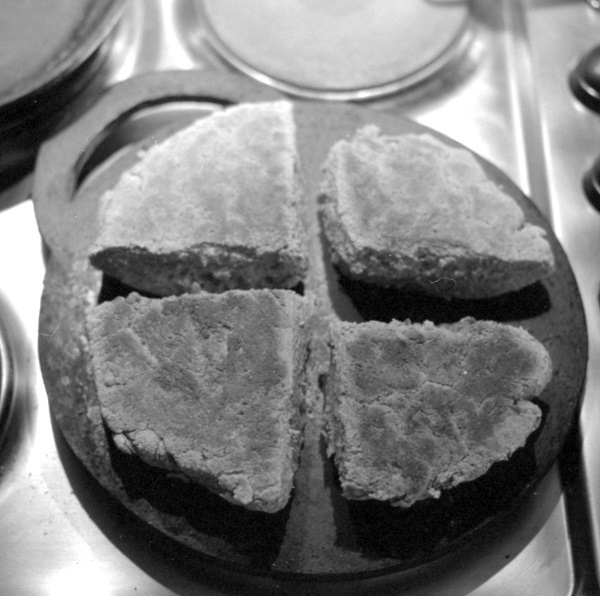Farls

A ‘bakestone’ is a type of heavy flat griddle. The one I have is a disc with a cut-out handle 10" in diameter and ⅓" thick. It had been my maternal grandmother’s. After she died, it went to my aunt, who later passed it on to me after I’d started making bara planc, a traditional Welsh style of bread not baked in an oven but cooked on the stove-top. I had at first been making it in a cast-iron pan, but a bakestone, being thicker, provides a more uniform heat better suited to the task. Bara by the way simply means ‘bread’, and planc is one of the Welsh terms for a bakestone.
Back in the mists of time bakestones were actual stones, but in more recent centuries cast iron and mild steel have been the preferred materials. Mine has no kind of maker’s mark or other sign of its origin, and I was for a time curious as to how old it might be. The mystery was solved when, talking to my Dad one day about my bread-making activities, he told me he’d made it ca. 1970. He’d just begun his first post-apprenticeship job as a “maintenance fitter” at a factory. Juniors like him were sometimes given busy-work to keep them out of harm’s way, and one such task he’d been assigned was making bakestones by cutting them out of mild steel plate. Of the several he made, one became a gift to his mother-in-law.
Making bara planc is easy enough but takes a few hours and calls for a certain amount of premeditation. Soda bread on the other hand can be rustled up more spontaneously, and is easier still, with a dough very quickly fashioned by mixing buttermilk into flour with a little salt and a little more baking soda added. Once the dough is pressed on to the stone and cut into ‘farls’ (as depicted above), one’s warm, freshly-cooked bread is soon ready to enjoy.